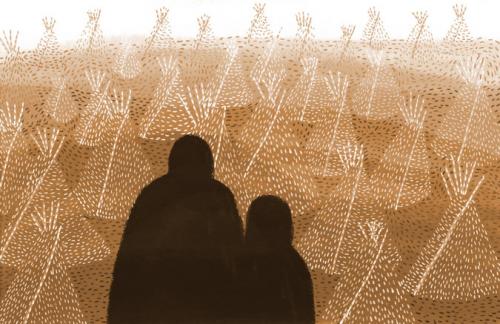
NEW HAVEN — MANY people think of the Civil War and America’s Indian wars as distinct subjects, one following the other. But those who study the Sand Creek Massacre know different.
On Nov. 29, 1864, as Union armies fought through Virginia and Georgia, Col. John Chivington led some 700 cavalry troops in an unprovoked attack on peaceful Cheyenne and Arapaho villagers at Sand Creek in Colorado. They murdered nearly 200 women, children and older men.
Sand Creek was one of many assaults on American Indians during the war, from Patrick Edward Connor’s massacre of Shoshone villagers along the Idaho-Utah border at Bear River on Jan. 29, 1863, to the forced removal and incarceration of thousands of Navajo people in 1864 known as the Long Walk.
In terms of sheer horror, few events matched Sand Creek. Pregnant women were murdered and scalped, genitalia were paraded as trophies, and scores of wanton acts of violence characterize the accounts of the few Army officers who dared to report them. Among them was Capt. Silas Soule, who had been with Black Kettle and Cheyenne leaders at the September peace negotiations with Gov. John Evans of Colorado, the region’s superintendent of Indians affairs (as well as a founder of both the University of Denver and Northwestern University). Soule publicly exposed Chivington’s actions and, in retribution, was later murdered in Denver.
After news of the massacre spread, Evans and Chivington were forced to resign from their appointments. But neither faced criminal charges, and the government refused to compensate the victims or their families in any way. Indeed, Sand Creek was just one part of a campaign to take the Cheyenne’s once vast land holdings across the region. A territory that had hardly any white communities in 1850 had, by 1870, lost many Indians, who were pushed violently off the Great Plains by white settlers and the federal government.
These and other campaigns amounted to what is today called ethnic cleansing: an attempted eradication and dispossession of an entire indigenous population. Many scholars suggest that such violence conforms to other 20th-century categories of analysis, like settler colonial genocide and crimes against humanity.
Sand Creek, Bear River and the Long Walk remain important parts of the Civil War and of American history. But in our popular narrative, the Civil War obscures such campaigns against American Indians. In fact, the war made such violence possible: The paltry Union Army of 1858, before its wartime expansion, could not have attacked, let alone removed, the fortified Navajo communities in the Four Corners, while Southern secession gave a powerful impetus to expand American territory westward. Territorial leaders like Evans were given more resources and power to negotiate with, and fight against, powerful Western tribes like the Shoshone, Cheyenne, Lakota and Comanche. The violence of this time was fueled partly by the lust for power by civilian and military leaders desperate to obtain glory and wartime recognition.
Read more here